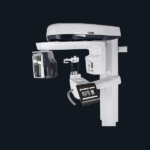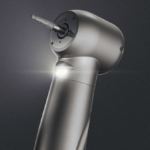
Dental Gutta-percha is one of the widely used endodontic obturation materials.
It fills a tooth after shaping and cleaning in a root canal procedure.
This material is a plastic filling, produced from the coagulated latex of Malaysian percha trees.
It is heated and then compressed to fill the root canal.
The gutta-percha is still the best material for filling the root canal as it seals the area completely preventing further damage and infection.
This article highlights the uses of gutta-percha in dentistry, specifically the root canal procedure. Let’s find out more below!

What is Dental Gutta-Percha
Gutta-percha is a natural rubber material that is present in Palaquium trees.
In order to obtain the material, these trees are felled, and next, they are coagulated.
As a result, a rubber-like sap forms which the manufacturers collect and then ship in the form of bricks.
The use of this material in dentistry prevents any bacteria from entering the root canal.
As the dentist removes the tooth’s damaged area, the pulp.
Then they proceed to clean and disinfect the teeth before filling it with the gutta-percha that covers it entirely and seals in place.
This offers a permanent solution to the patient and prevents the entry of bacteria thus absolving any chance of complications.
Usually, the dentist will be using Gutta-percha points.
These have different sizes in order to fit into the different root canals.
The dentist heats and compresses this thermoplastic filling material in the canal and then seal it with adhesive cement.
It is a safe filling material that is easy to use as well.
In fact, there are misconceptions that the product can cause allergies.
This rumor may stem from its similarity to latex.
However, it is untrue.
Gutta-percha remains in popular use because it is accepted as a safe material.
That said, it does have its own set of disadvantages.
But first, let’s find out why this material is so popular in root canal filling.

Benefits of Dental Gutta-Percha
Low Allergy Risk
Gutta-percha is generally safe to use and there have been very few cases of reaction in patients who suffer from latex allergy.
That said, you should ask each patient if they are allergic to gutta-percha to take proper safety measures.
Tips are Removable
The tips are rubber-like.
Hence, endodontists can easily remove them in future procedures only by heating and softening them up.
Low Toxicity and Safe to Use
Besides posing a low risk of allergies, this material is safe to use because it has low toxicity, to begin with.
Gutta-percha is a natural material so the toxicity runs low.
However, there have been concerns about the presence of cadmium in the tips.
This can arise in the manufacturing process as there can be a trace left during the methods used to manufacture the tips.
Even if there is any trace of cadmium left on the tips, it is usually less than 0.10 µg.
That is a negligible amount in comparison with the safe consumption limits of 15 µg/g in food.
Thus, it remains safe and less toxic to use throughout.
Gutta-percha is Radiopaque
The composition of the tips includes 1 to 18 percent of metal sulfates strontium or barium for radiopacity.
This makes them visible on an X-ray.
It can especially beneficial for a dentist as it enables them to know and see clearly how much the tips have filled and covered the cavity.
Therefore they can assess the extent to which it has been sealed.
Other materials in the process are 59 to 76 percent Zinc Oxide as filler, 1 to 4 percent water or resins for plasticity and 18 to 22 percent gutta-percha as the matrix.
Given these benefits, Gutta-percha is a popular choice for root canal filling.

Disadvantages
It is not and adhesive material
As a filling to seal the root canal, gutta-percha lacks adhesiveness.
It is not an adhesive material so in order for it to stick amd seal properly, you will need additional cement.
The cements make an impenetrable barrier that seals the root canal with the gutta-percha.
So in addition to the gutta-percha a dentist will also need sealing cements to complete the process. It is not enough to rely only on the gutta-percha.
Difficult to see vertical root fractures
Suppose if a tooth has already been filled with gutta-percha and it fractures, in that case it is hard to see the vertical fracture.
The filling of the gutta-percha hinders seeing the vertical root fractures so it is difficult and challenging to eventually see it.
Restoration and Gutta-Percha
This material does not hold on as strongly with few restoration methods.
Therefore that can be to its disadvantage as a filling material for the root canal.
There are still two methods of gutta-percha obturation.
Find out about them later!
First, get to know more about the type and size of gutta-percha ideal for your patients.

Choosing Dental Gutta-Percha
The two types of gutta-percha are:
- Alpha
- Beta
The most commonly used type is alpha.
It is more common in use for thermoplastic gutta-percha because of its vicious and adhesive characteristics, as well as it tends to shrink less when heated.
In comparison, beta gutta-percha comes in use for cold filling techniques.
Thus, it is more flexible when cold.
Besides the type of the gutta-percha, there is the size of it as well.
Differentiating the size and usage of the gutta-percha tips is done through various methods.
One of these is seeing the ISO code.
The ISO code is a color code presnet on the tips to disntibguish between sizes.
The measurements of the tip include its:
- Length
- Radiopacity
- Taper
Using the ISO code, the dental gutta-percha is classified according to the taper size and teh ehad diameter.
This is hown through the color of the tip which indicates its size so that the dentist can clearly identify it through the procedure.
This metod of coding helps the dentist because if they use endodontic files with the same coding, they simply need the same gutta-percha as the hole in the canal that the endodontic file made.
This easens the part of selecting the right size for your gutta-percha.
Moreover, its tips not only have the ISO code but also markings that indicate the depth of the canal in which the tip inserts.
Besides, ISO code, you can measure the size using gutta-percha tips that are not standardized.
These use the conventional sizes such as Extra extra fine (XXF), extra fine (XF), fine (F), medium (M), large (L) and extra large (L).
Unlike ISO code, they are neither color coded nor marked and are simply classified according to their sizes.

Methods of Use
Earlier the only common way of using gutta-percha was cold lateral condensation.
This procedure involves pressing the cold tips into the root canal that is now filled and cleaned thoroughly.
Moreover, a cement then bonds the gutta-percha to the canal as it lacks adhesive properties.
This repairs the empty root canal for a long time.
Noe besides cold lateral condensation, there are other ways to use the gutta-percha specifically to fill root canals using the thermoplastic gutta percha.
Here it is heated so it turns more soft, viscous and adhesive.
The properties of gutta-percha are put to good use when heated.
As the adhesive properties work, not as much cement is need to seal the canal entirely.
Though, you still need some to enure there is no bacteria penetration.
When choosing between the two, actually both of teh processes are very effective to use gutta-percha.
So eventually what your dentist will use will depend on their preference.
Nonetheless, it is still best that the patients avoid situations where they will have to get a root canal treatment.
That can happen if you take good care of your oral health.
More on that below!

Taking Care of Oral Health
In an ideal situation you should be taking good care of your oral health that you will not require a root canal treatment.
That means brushing your teeth twice daily as well as flossing them once a day.
This is the bare minimum that you have to do each day.
But to keep your oral health in an even better condition you can clean your teeth with a water flosser and interdental brush occasionally.
Also, you may try using an electric toothbrush to ensure that all of your teeth are cleaned in the right manner.
Rinse your mouth with a mouthwash once a day to retain fresh breath and prevent the accumulation of bacteria.
All of these small things alongside your bi-annual visit to the dentist can ensure your teeth remain in good condition.
Obviously if there is a need of getting a root canal treatment you should go to your dentist.
They will use dental gutta-percha after cleaning and filling the area to seal the canal completely.
This will serve as a long term solution to your affected tooth and the canal.
That said, it is best to avoid such extensive procedures by taking good care of your oral health and observing the onset of any dental problems regularly.




